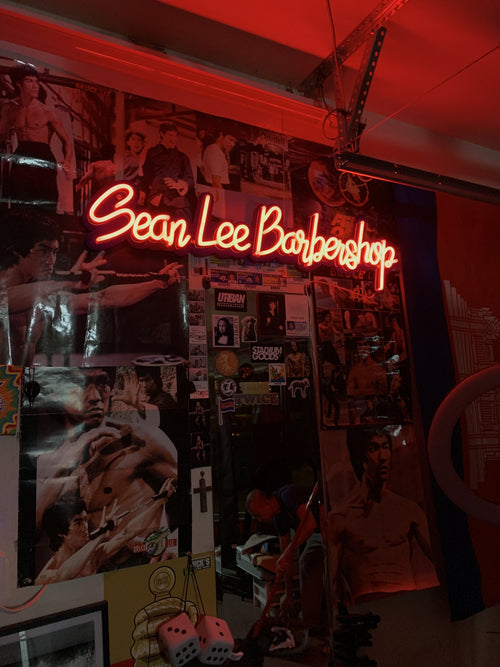Neon signs are an iconic element of urban landscapes, often seen illuminating city streets and brightening storefronts, bars, theaters, and more. At their core, neon signs are a form of advertising that utilizes neon gas to create bright, colorful, and eye-catching displays. They have become more than just a tool for business visibility—they are woven into the fabric of modern culture and artistic expression. From their invention to their widespread use in the 20th century and their eventual resurgence as a medium for art and design, neon signs have undergone significant evolution. This article explores the science behind neon signs, their historical development, cultural impact, and modern applications in the art world, demonstrating their multifaceted nature and importance in both functional and aesthetic realms.
The Science of Neon Signs

Neon signs operate through a relatively simple yet fascinating scientific process. The primary component of neon signs is the noble gas neon, which emits a distinct and vibrant glow when subjected to an electrical current. Neon is a chemically inert gas, meaning it doesn't easily react with other elements, and it was discovered in 1898 by British scientists Sir William Ramsay and Morris W. Travers.
In the context of neon signs, neon gas is enclosed in glass tubes that are bent into various shapes or letters to form words, images, or logos. When an electrical current passes through the tube, it excites the neon atoms, causing them to release energy in the form of light. This light is what gives the sign its signature glow, typically in shades of bright red, orange, or pink, depending on the amount of energy passed through the gas.
While neon is often associated with these fiery reds, other colors can be achieved by using different gases or coatings on the inside of the tubes. For instance, argon gas can produce a blue light, while mercury produces a greenish-blue hue. The combination of various gases, phosphor coatings, and tube coatings allows for a full spectrum of colors in neon signage.
The Birth of Neon Signs: Early History and Commercial Adoption
The birth of neon signs as we know them today can be traced to the early 20th century, particularly the 1920s and 1930s, when neon technology was harnessed for advertising purposes. While neon gas had been known to scientists for some time, it was French engineer Georges Claude who truly unlocked its potential in the realm of public display.
Claude is credited with developing the first practical neon lamp in 1910, and he unveiled the first neon sign at the Paris Motor Show in 1912. The sign, which advertised a French car dealership, sparked widespread fascination due to its vivid and bright glow, and it wasn't long before neon signs became a popular form of advertising around the world.
By the 1920s, neon signs were beginning to appear in major cities, with Los Angeles and New York emerging as significant hubs for their use. The signs were initially utilized for commercial purposes, often found lighting up storefronts and businesses, drawing in customers with their flashy, attention-grabbing design. The neon aesthetic became synonymous with modernity, technology, and urban life, especially during the Art Deco movement, which embraced sleek lines, geometric shapes, and bold colors.
The first neon sign in the United States appeared in 1923, when a Los Angeles car dealership installed two large neon signs in front of their business. These signs were an immediate hit, and the demand for neon signs spread quickly. Soon, major cities across the U.S. and Europe were adorned with neon signage advertising everything from theaters and hotels to restaurants and liquor stores.
Neon Signs and Their Role in Shaping Urban Culture
As the use of neon signs proliferated throughout the 20th century, they became deeply ingrained in the cultural and visual identity of urban spaces. Neon signs transformed cities into vibrant, illuminated environments, particularly in entertainment districts and downtown areas. For many, the glow of neon lights became a symbol of nightlife, excitement, and modernity.
New York’s Times Square, with its dazzling array of neon signs, became one of the most iconic examples of how neon could shape the urban landscape. In cities like Las Vegas, neon signs played a central role in creating a larger-than-life environment, where neon lights were used to construct massive signs advertising casinos, theaters, and hotels. The bright lights of these cities became synonymous with the spirit of entertainment and consumerism, drawing crowds from all over the world.
The importance of neon signage grew not just as an advertising tool but as part of the broader cultural fabric. Neon signs often symbolized a sense of optimism and progress during the mid-20th century, and they were central to the imagery of a post-World War II consumer society. The aesthetics of neon—often bold, flashy, and unconventional—spoke to the growing desire for individuality and personal expression, which was a hallmark of this era.
Neon Signs in the Digital Age: Decline and Resurgence
While neon signs flourished during the mid-20th century, their popularity began to decline in the latter part of the century due to the rise of alternative lighting technologies, such as fluorescent and LED lights. These newer technologies were cheaper, more energy-efficient, and easier to maintain, which led to neon signs being gradually replaced in many places.
However, despite this decline, neon has not disappeared from the cultural landscape. In recent years, neon signs have experienced a resurgence, both as functional signage and as an artistic medium. This revival can be traced to a renewed appreciation for vintage aesthetics and a growing interest in hand-crafted, bespoke art forms.
The 1980s and 1990s saw neon return to popularity as part of the retro and nostalgic revival movements. Neon signs came to symbolize the vibrant energy of the 1980s, particularly with the rise of pop culture icons like neon in music videos, art, and fashion. Artists began experimenting with neon in their work, and designers embraced the retro aesthetic that neon offered. Museums and galleries now feature neon art as part of their collections, showing how neon can be an effective medium for creative expression.
Neon Signs as Art: A Contemporary Perspective
One of the most significant aspects of neon signage today is its intersection with the world of contemporary art. Neon has become a popular medium among artists due to its bright, expressive qualities and its ability to evoke emotions through light. In this context, neon signs have evolved beyond their utilitarian roots in advertising to become a powerful tool for self-expression and political commentary.
Artists like Bruce Nauman, Tracey Emin, and Dan Flavin have used neon as a central element in their installations, often using it to explore themes of language, identity, and society. Emin’s neon works, for example, are known for their use of intimate, confessional texts that illuminate personal experiences, while Nauman’s neon works often delve into complex ideas around language, communication, and the human condition.
The world of commercial neon signs and art has also blurred in many ways. Companies seeking to communicate a brand message often turn to contemporary neon artists to create visually compelling signage that carries a sense of craftsmanship and artistic value. In this way, neon signs have transcended the boundaries between advertising, art, and design, further solidifying their relevance in modern culture.
The Future of Neon Signs
As we move further into the digital age, the future of neon signs remains uncertain, particularly with the increasing dominance of LED and digital screens. These newer technologies offer a wider range of colors and effects, and they are more energy-efficient and durable than traditional neon. However, the unique glow of neon and its association with nostalgia, art, and urban culture ensures that neon signs will likely continue to have a presence in both commercial and artistic settings for years to come.
Moreover, advances in technology are allowing for hybrid forms of neon signage, blending traditional neon with digital displays and other light technologies. These hybrid forms may offer an exciting future for neon, combining the best of both worlds: the timeless, handcrafted beauty of neon with the versatility and adaptability of modern technology.
Conclusion
Neon signs have a rich history that spans over a century, transforming from a practical advertising tool to an emblem of urban culture, a medium for artistic expression, and a nostalgic reminder of past decades. Their vibrant glow, cultural significance, and artistic potential ensure that neon signs will continue to play an important role in shaping the visual and cultural landscapes of cities around the world. Whether as a functional tool for business, a work of art, or a symbol of cultural history, neon signs remain an enduring element of modern life that continues to evolve with the times.




